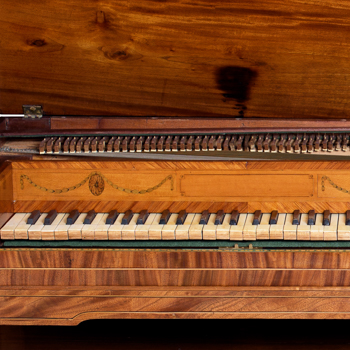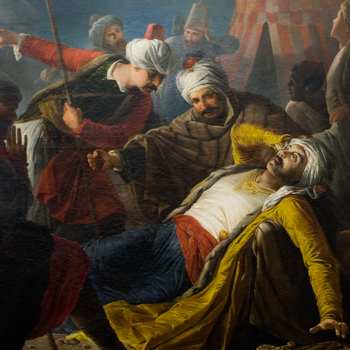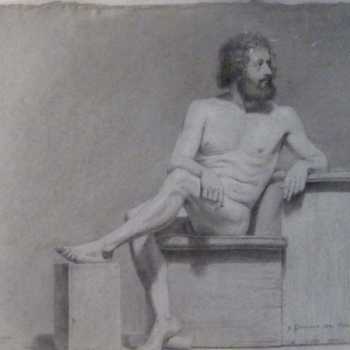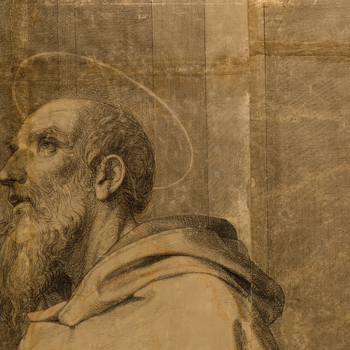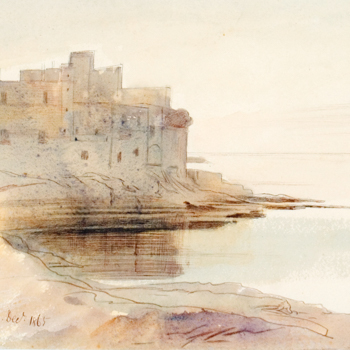Veiled Oriental Lady with Parasol
Amadeo Preziosi is one of the top Orientalist artists in the 19th century. Born in 1816 to a noble family, Preziosi’s passion for art led him to study at the École des Beaux Arts in Paris. Between 1840 and 1842, he permanently left Malta for Constantinople and many regions in the Near East.
This study of an Oriental woman testifies to Preziosi’s keen powers of observation and his consummate skills with the watercolour medium. Devoid of a contextual background, this work invites the viewer to focus solely on the lady’s fine dress and her subtly suave attitude deriving from her high social status. Such a watercolour would have been appealing to travellers to the Orient as it would have been a memento of their overseas experience.


